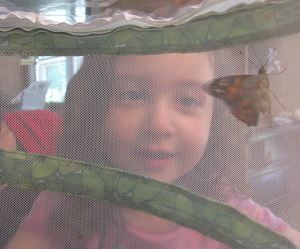
We’ve visited our local vivarium and are fascinated by butterflies. To get a closer look at the butterfly life cycle, we ordered the Insect Lore Live Butterfly Garden from Amazon and then went onto Insect Lore’s site to order the caterpillars (an extra $5 handling fee).
The kids were thrilled to open the package and check out our five little larvae (i.e.: caterpillars).
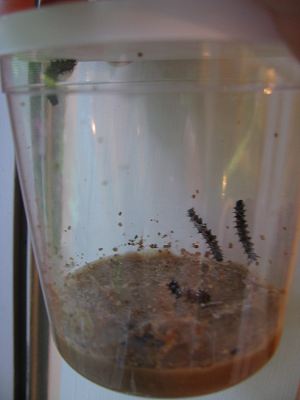
Our tiny caterpillars got bigger and fatter–just like The Very Hungry Caterpillar.
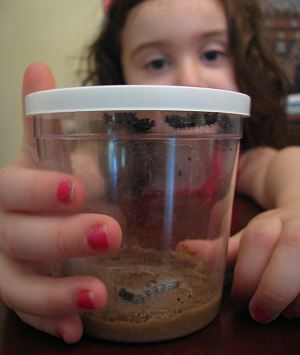
And they spun silk and ate and defecated in their little jar. All very fascinating.
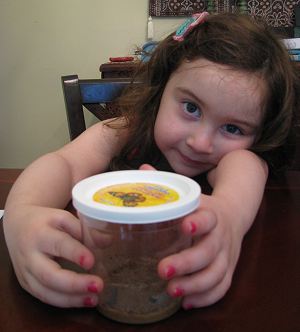
But not as fascinating as the metamorphosis we were about to witness! The caterpillars crawled to the top of the jar and hung upside down in a “J” shape.
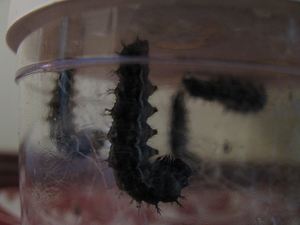
Then, they entered the pupal stage and transformed into chrysalides. My daughter was so excited to see one after another create the iridescent chrysalises.
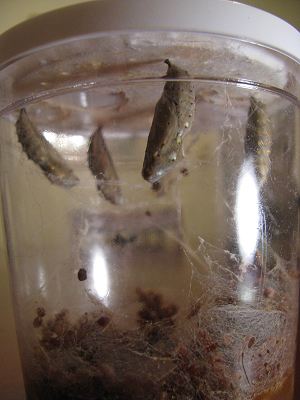
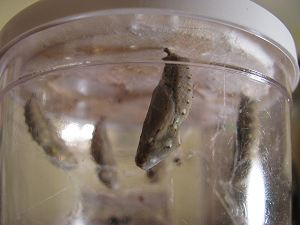
We pinned the paper with the chrysalises to the side of the butterfly garden.
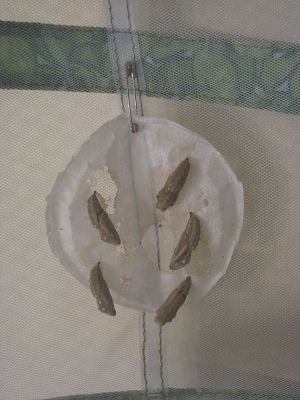
While we were doing this, they vibrated. Apparently this is a defense mechanism but it only fascinated us!
Eventually, the adult butterflies emerged! The first day we got two, the next day we saw two more, and on the third day we had all five!
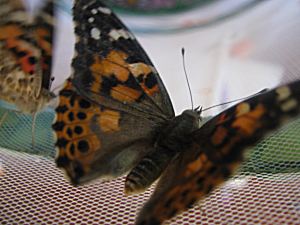
My kids loved looking at the butterflies!
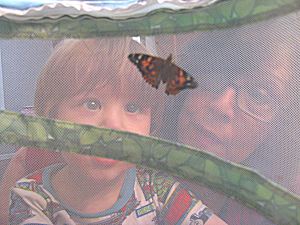
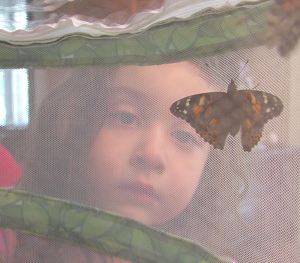
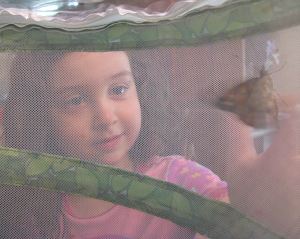
What a treat to see these amazing creatures close up. We saw that the underside of the wings were a duller brown than the brilliant orange of the topside. My daughter hypothesized this was for camouflage. I bet those eye-like markings are another defense mechanism.
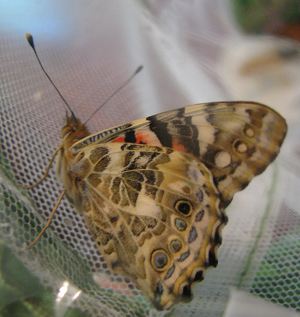
We learned that butterflies have two compound eyes but really there are thousands of eyes on each mound.
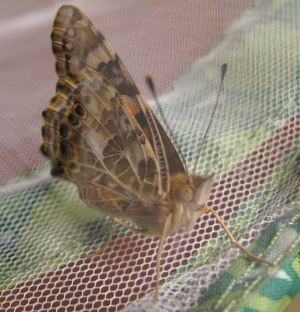
We also fed butterflies and watched them drinking through their straw-like “tongue”, or proboscis.
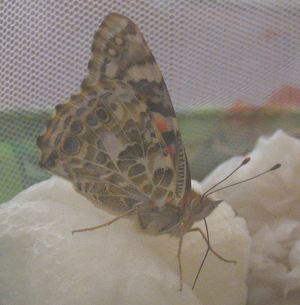
We added flowers to the habitat to make these pollinators feel at home. And we learned that one of the reasons flowers are so pretty is to attract butterflies and other pollinators.
We printed out these Butterfly Life Cycle Sequencing Cards and cut them out.
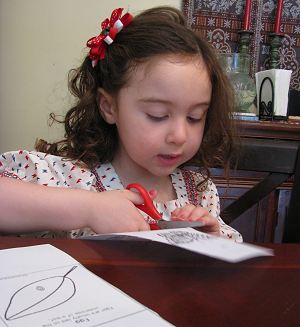
And colored them in…
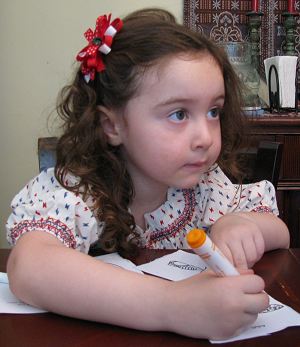
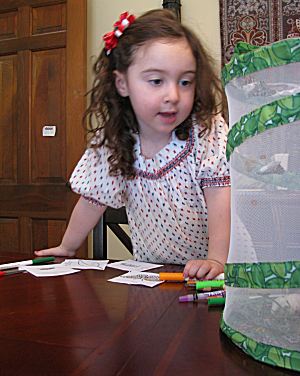
Using our butterfly friends as models, of course…
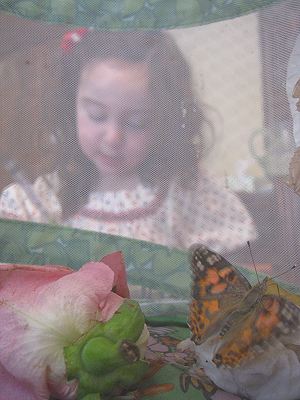
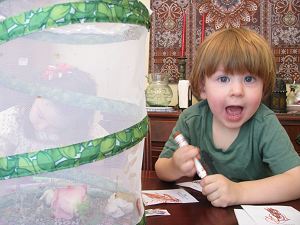
Then we put our sequencing cards in the correct order.

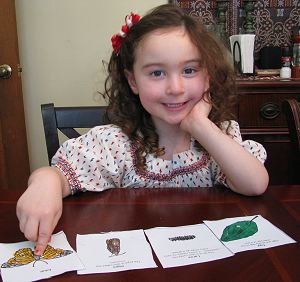
And pasted them into our science journals.
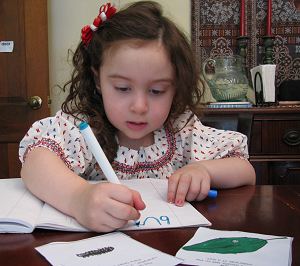
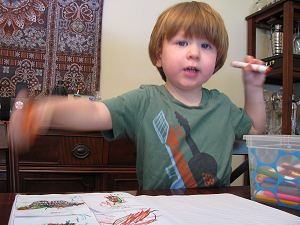
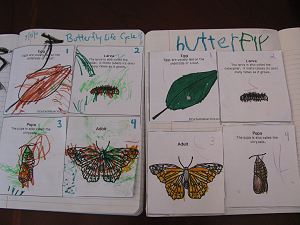
I left our release date up to the kids, who both decided after a couple of days it was time to let the butterflies go. My daughter observed that they spent a lot of time at the top of the habitat and took this as a sign that they wanted their freedom.
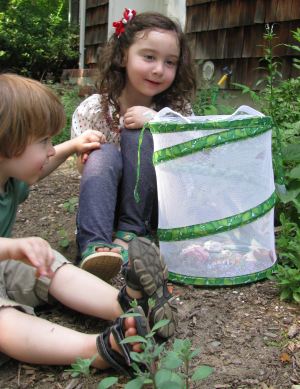
Bye, bye, butterflies!
Our butterflies are gone but the butterfly learning will go on with books, exhibits and crafts!
—
This post is part of the Smart Summer Challenge–we’re encouraging you to beat the summer vacation slide with fun, everyday learning activities! You can take just 10 minutes a day to find the educational opportunities all around us or get as elaborate as you like! Whatever you do, we invite you to share your experiences each week in our linky, which goes up every Friday during the challenge and stays open through Thursday.
Find out more about the Smart Summer Challenge and grab our free calendar of summer learning ideas, and “like” the Smart Summer Challenge page on Facebook.

Find more great ideas from your hostesses, Candace of Naturally Educational (that’s me!), Amy of TeachMama.com, and MaryLea of Pink and Green Mama!
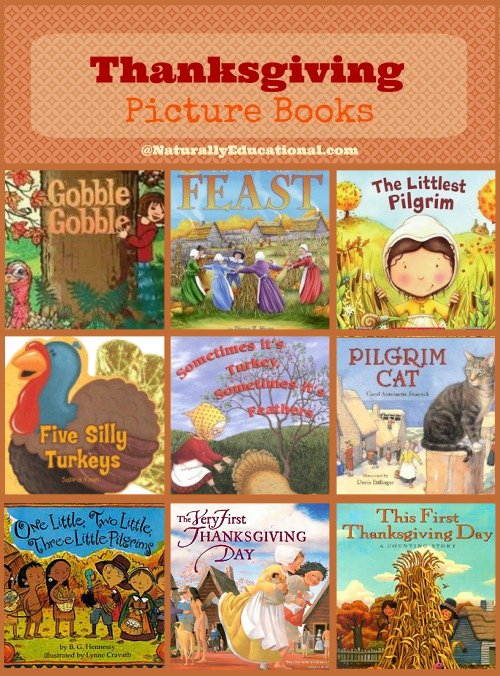
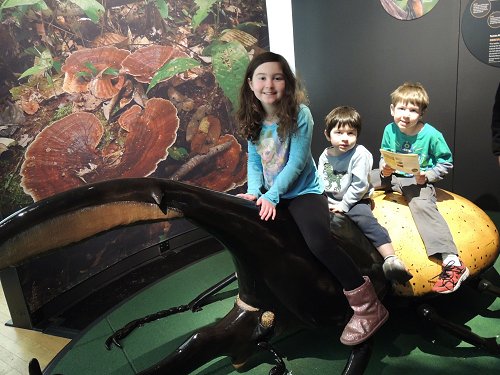
Wow.. We’ve got try this one. Im sure our little daughter would love this. How did you feed them caterpillars?
The jar has caterpillar food in it! You feed sugar-water or orange slices to the butterflies.
I’m a new teacher. Last year, as a I was finishing my education courses, I took a classes about how to teach science to elementary students. We were required to buy the butterfly kit through this company and raise the butterflies (recording our observations each day). I loved it! I received 5 caterpillars and all of the caterpillars became butterflies. I didn’t (don’t) have children of my own, but I can’t wait to do this with my students! I know they’ll love it 🙂
As for Insect Lore, I will definitely be using this company again.